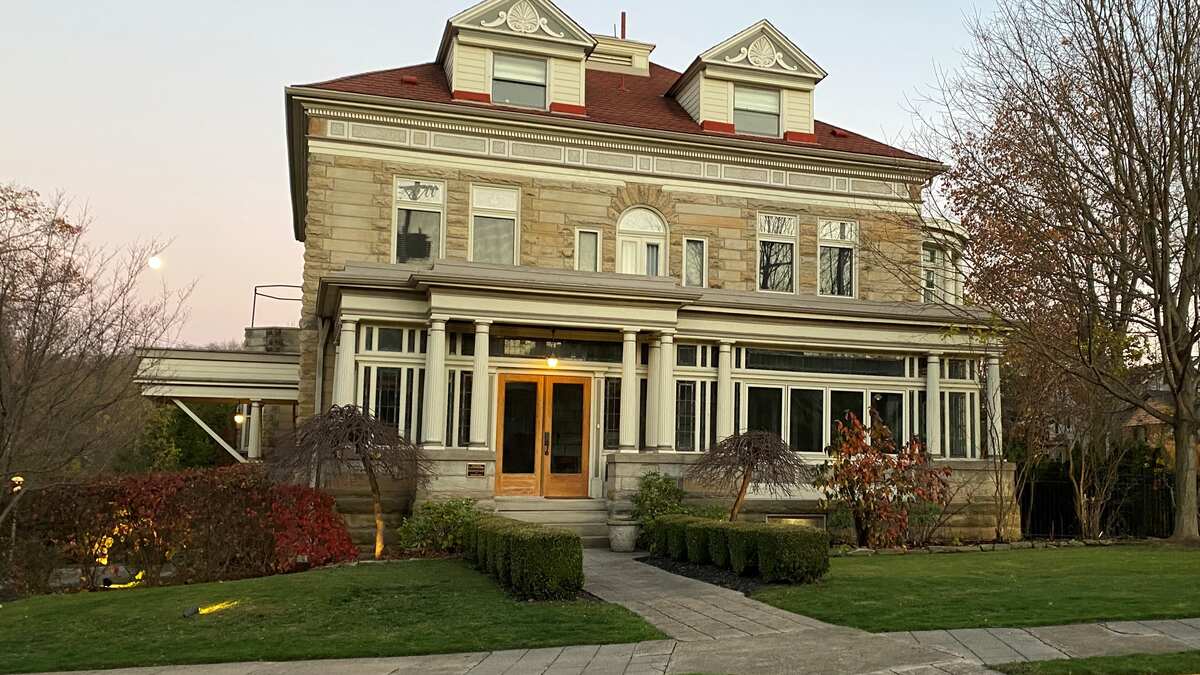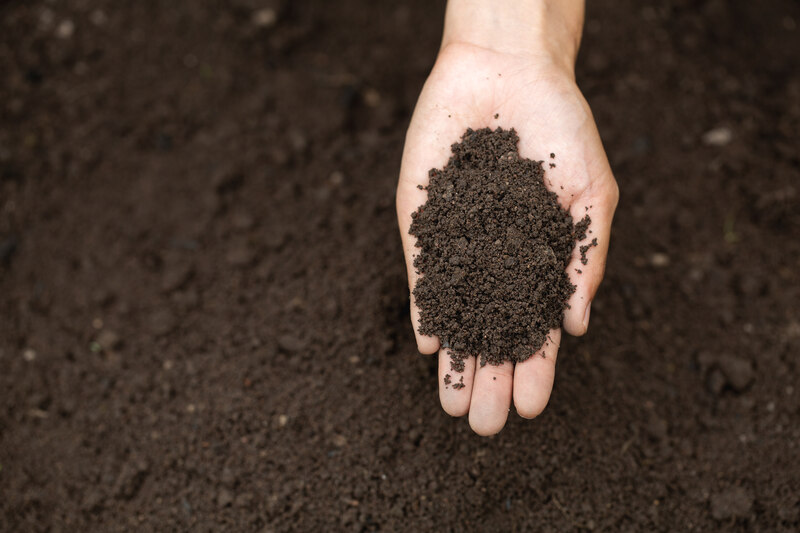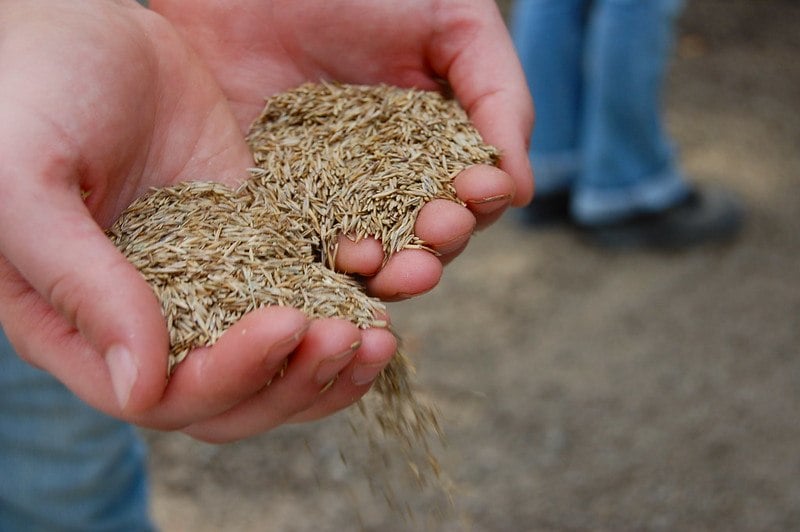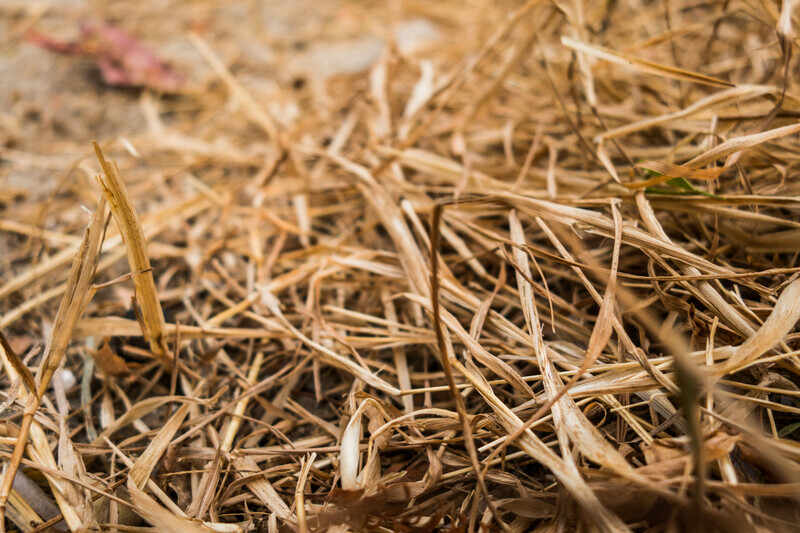
Getting the timing right is a key factor in growing a beautiful and strong lawn. The best time to plant grass seed in Pennsylvania is late summer, and in this article, we’ll discuss why.
When seeded in late summer, the grass will have the cooler fall and spring seasons to become established. But we’ll also explain how to plant grass seed successfully so you can grow a strong and healthy Keystone State lawn.
When to Plant Grass Seed in Pennsylvania
The best time to plant grass seed in Pennsylvania is in late summer to early fall. Mid-August to early October are the best months. But why is that so? Why can’t you plant anytime? Seeding in late summer is the optimal time to seed turf because:
- It gives seedlings the fall and spring to establish, both of which are seasons favorable for cool-season grass growth.
- The soil is warmer and dryer in late summer (mid-August to early September) than during spring, promoting seed germination.
- The frosts during fall will help keep the weeds from creeping into the turf.
If you miss the planting window to seed your turf in late summer, don’t worry. Add to your Pennsylvania lawn care schedule that planting grass in mid-spring, April to mid-May is acceptable.
What Grass Seeds to Plant in Pennsylvania

Photo Credit: Shutterstock
Most of Pennsylvania is in a cool-season grass zone while the southern part of the state is in a transition zone, where warm-season grasses can grow as well.
Some of the best grass seeds for Pennsylvania are:
- Kentucky bluegrass
- Perennial ryegrass
- Fine and tall fescue
- Bentgrasses
- Zoysiagrass
How to Plant Grass Seed in Pennsylvania
Now that you know when to plant grass in Pennsylvania, let’s discuss how you can plant your grass seed successfully. Here is a quick step-by-step guide on how to plant grass seed:
- Access the area: Visit the site and measure the area to know how much material you will need. Also, take note of any obstacles, like tree stumps, rocks, roots, or weeds, for example.

- Test the soil: Testing the soil pH of your lawn is a crucial part of planting grass seed. A soil test will tell you what kind of soil you have and, knowing that, you will be able to choose an appropriate grass type and prepare the soil as needed with fertilizers, lime, or organic matter.
- Prepare the soil: Prepare the soil by removing any rocks, getting rid of tree stumps and existing grass, and treating weeds with herbicides. Just make sure to use a herbicide that won’t leave residues that can interfere with the turf. If necessary, grade and till the soil before adding any type of soil amendments.

Photo Credit: VSPYCC / Flickr / CC BY 2.0
- Seed the soil: Select high-quality seed. Prefer those that the label states as “certified seed,” as it is a guarantee of cultivar purity. Evenly distribute the seed for a uniform turf.
- Apply starter fertilizer: Applying a starter fertilizer to your lawn will help the seeds to become established. It should be applied just before or after seeding.
- Cover the seeds: Drag the soil with a leaf rake, and don’t apply pressure; you just want to cover the seeds with soil, but not move them.

- Finish it up with mulch: Mulching newly planted seeds helps retain soil moisture and moderate its temperature while keeping the seeds in place. Straw mulch is often used for recently seeded lawns.
Applying too much or insufficient mulch can backfire and result in extra work. On level or slightly sloped areas, 80 to 100 pounds of straw mulch will be sufficient to cover 1,000 square feet.
FAQ About Planting Grass Seed in PA
Can you Plant Grass Seeds in March?
March is not the best time to plant grass seeds in Pennsylvania. For a successful spring grass planting, seed the lawn in April or until mid-May. But be mindful that when you plant in the spring, the drought and heat of the summer will subject the seedlings to stress, making them vulnerable to common lawn weeds in Pennsylvania.
What is the Best Temperature to Plant Grass Seed in Pennsylvania?
In most of Pennsylvania, the best temperature to plant cool-season grass seed is when the daytime temperatures are between 60 F and 75 F and soil temperatures are between 50 F and 65 F.
But if you live in southern Pennsylvania, you can also grow Zoysiagrass, a warm-season grass. The best time to plant warm-season grasses is during late spring and early summer, when soil temperatures are at least 70 F and daytime temperatures are around 80 F.
When is it Too Late to Plant Grass Seed?
For late summer or early fall seeding, mid-October is already too late in Pennsylvania. If you miss late summer or early fall seeding, you can wait until spring comes around and seed in April up until mid-May.
Call a Pro Near You
Seeding a new lawn is a handful. But you don’t have to do it all by yourself. An experienced lawn care pro has the right knowledge and tools to take care of this task for you. We have trusted pros in Pittsburgh, Philadelphia, Erie, State College, Scranton, and many other cities in Pennsylvania.
Source:
Main Image Credit: Christopherpdriscoll / Wikimedia Commons / CC BY-SA 4.0